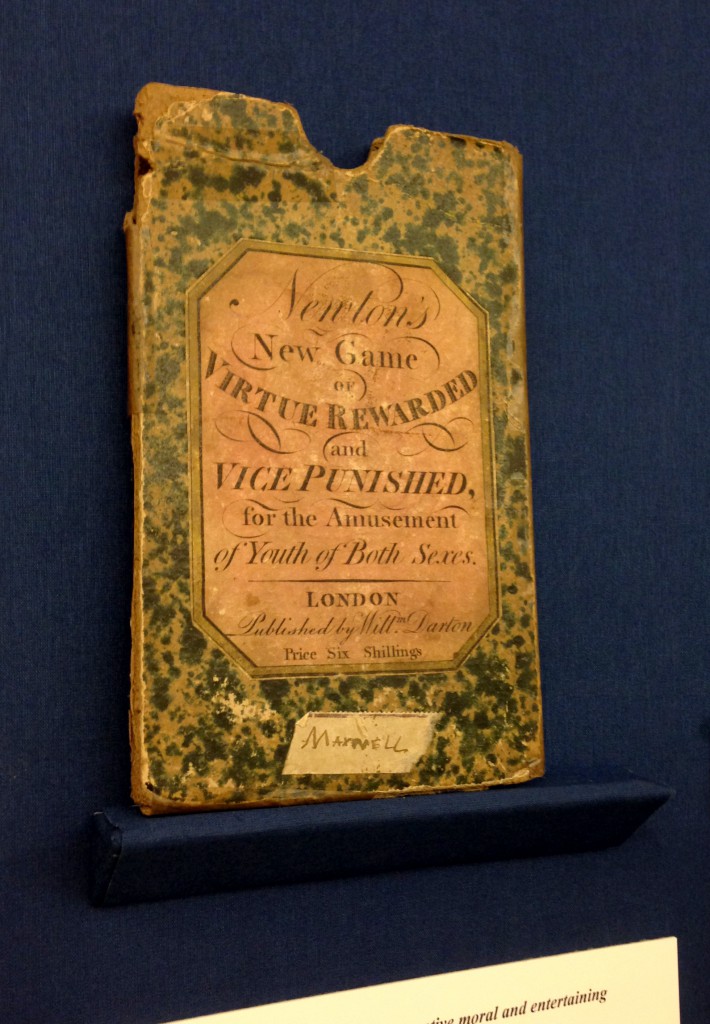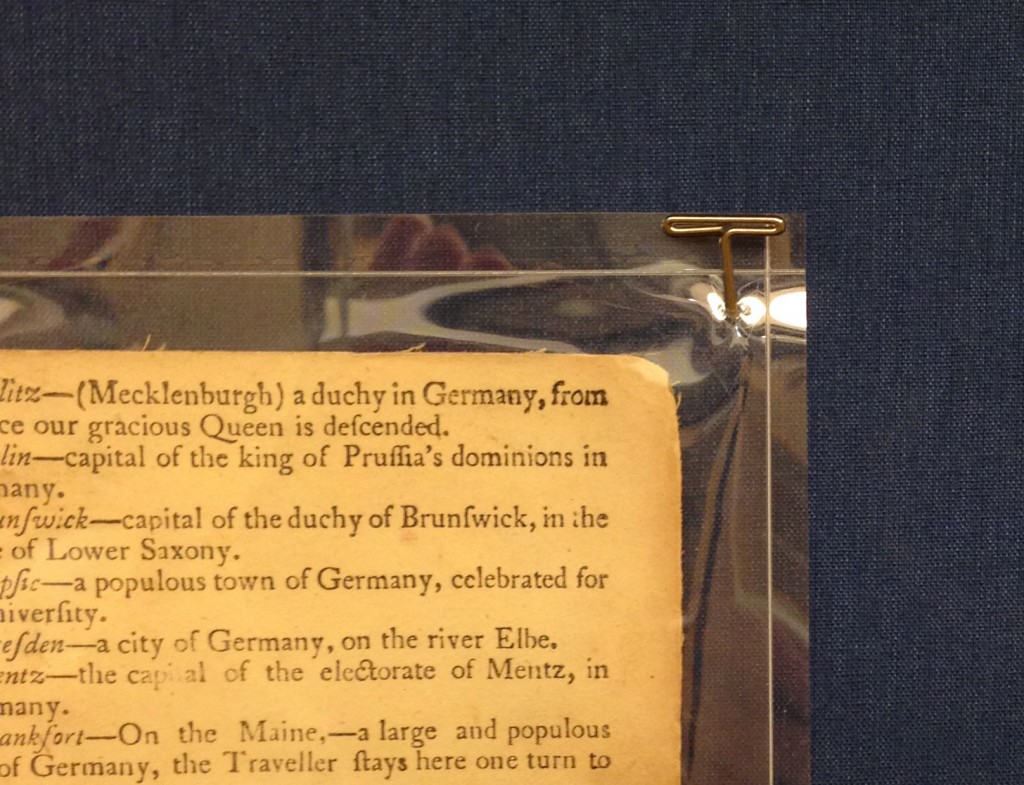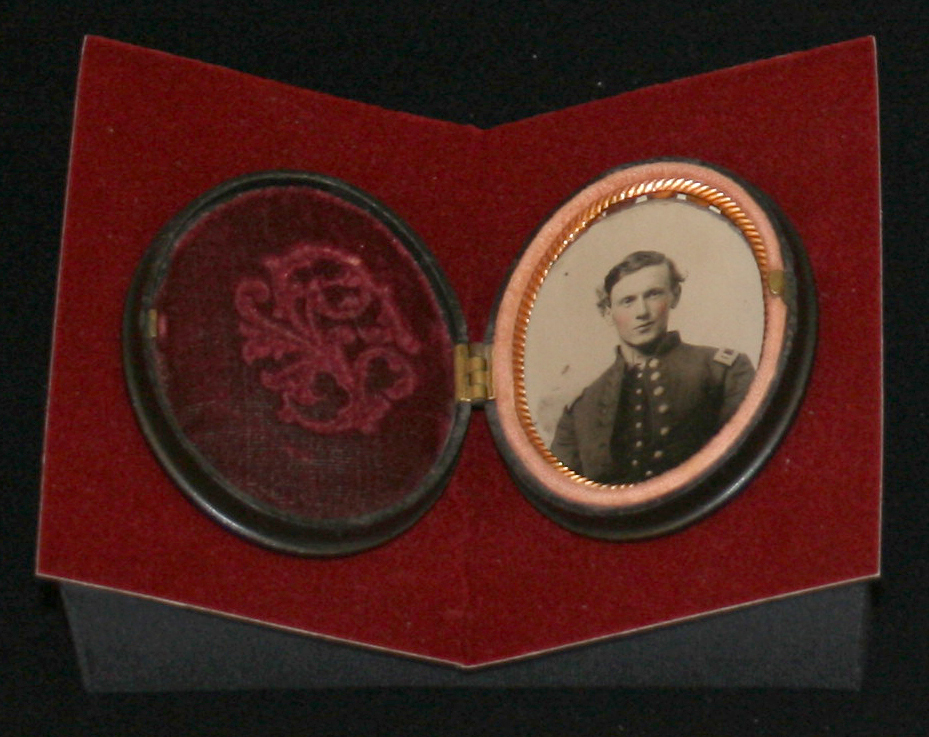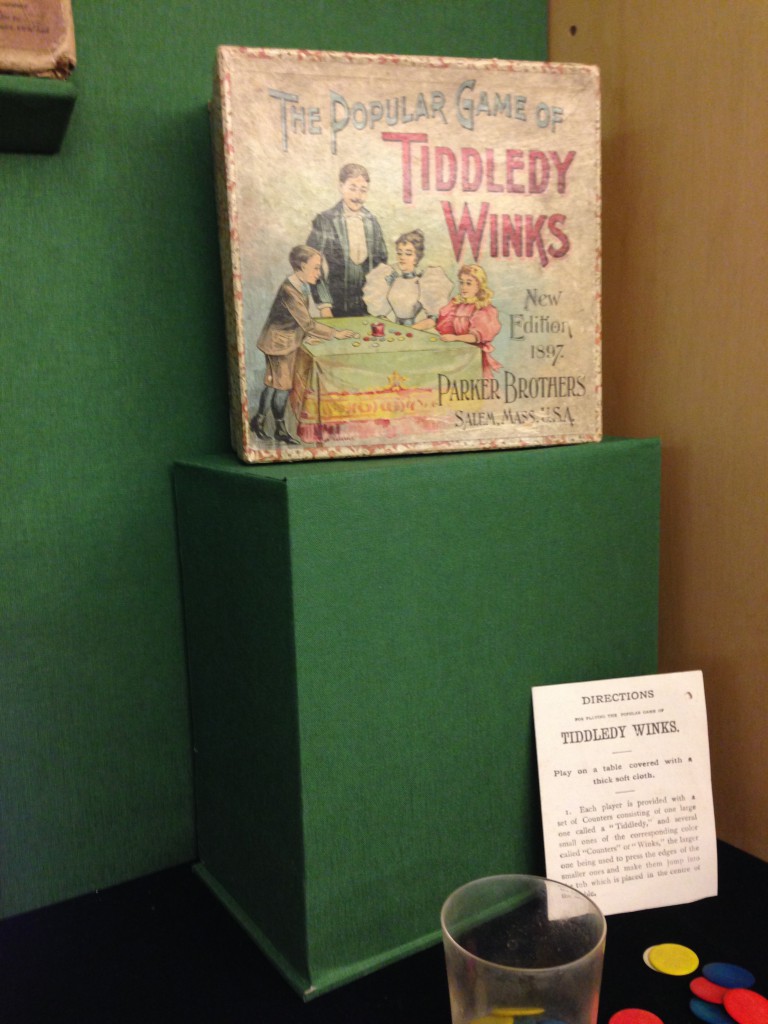Among the many activities of Special Collections is the exhibition of our materials. The librarians and staff of special collections work hard to curate several exhibits a year, choosing exhibit themes and carefully selecting materials from the collection to display in our exhibit space. When assisting the curator of an exhibit, it is my job to think and act from a preservation standpoint. Exhibiting materials can be quite damaging. Light exposure, undue stress on the materials or binding and fluctuating temperatures and humidity are just a few of the issues that arise when creating an exhibit of special collections materials.
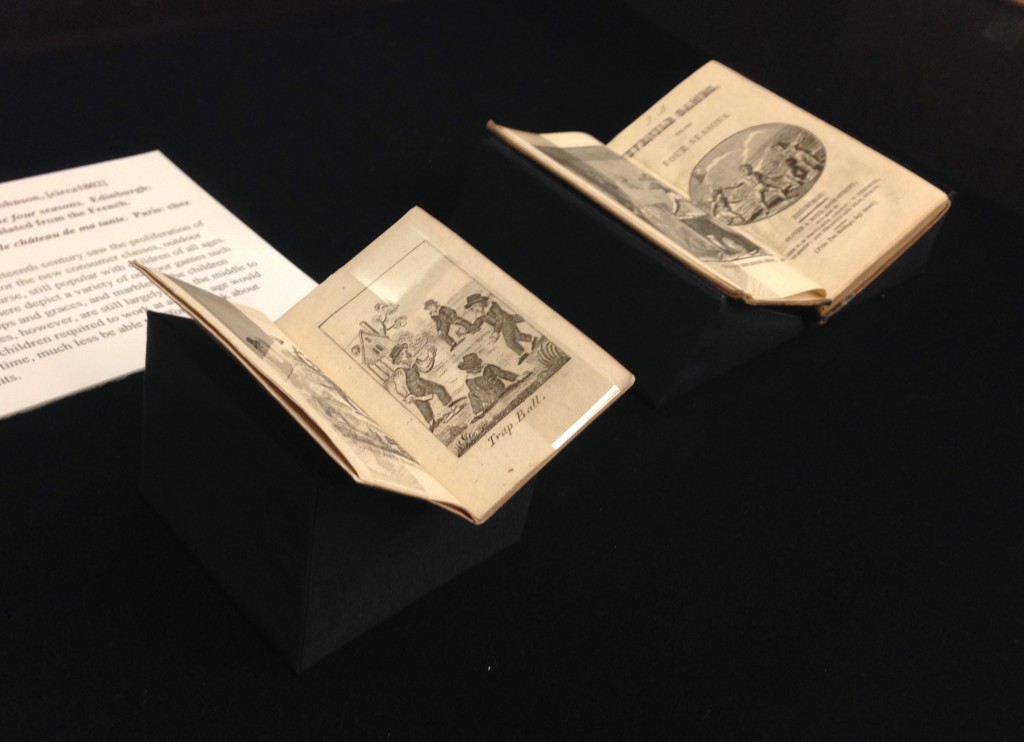
Two small volumes resting on custom cradles made from black cloth in order to blend into the background
Displaying Books and Bound Volumes
A good portion of the materials put on display in special collections are books and bound volumes. Properly displaying books can present a host of unique preservation issues. Oftentimes special collections books can be quite fragile, with loose or damaged bindings. Displaying a book should never be the cause of additional damage to a book or object. Occasionally I will recommend that a book not be put on display at all, if I think the stress from exhibit is too great a risk for the item. Otherwise, we use a variety of tools and supports to minimize the stress on the book as much as possible.
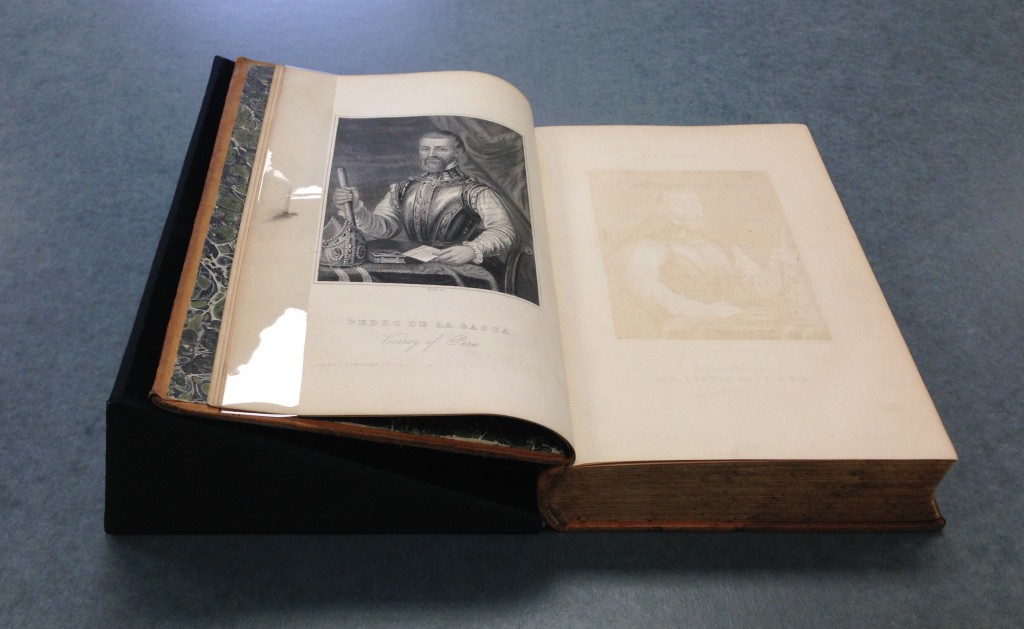
A book wrapped with a mylar strip to hold the volume open to the desired page, with a custom wedge for support
Quite frequently, the curator of the exhibit desires the book to be displayed open to a certain page, usually the title page or another page of great visual or informational interest. Opening a book 180 degrees can flatten the spine and cause considerable damage to the volume in question, therefore we utilize a variety of cradles, stands, and supports when displaying books. Another issue that arises when displaying books, especially volumes with stiff and inflexible bindings, is getting the book to stay open for display. You never want to force a book open, as this can cause severe damage to the spine and the binding. Instead, special collections uses a strip of clear mylar plastic, which is gently wrapped around the open section of the book, thereby allowing the book to stay open to the desired page. This technique of using mylar strips, in conjunction with properly fitted book supports creates a very gentle and safe way to display and open volume.
Displaying documents
Special Collections is home to much more than books and bound volumes. A large portion of our collections are made up of manuscript materials, flat documents, maps, and photographs. These types of flat materials often pose their own preservation issues. Occasionally, one can exhibit a flat document by simply laying it on a flat display surface, however, quite often the curator of the exhibit desires the item to be displayed standing upright or hanging. One way in which we are able to achieve this desired effect is to add an extra layer of support to the document through encapsulation. Once a document is encapsulated, it can be hung by simply using pins through the outer edge of the encapsulation, being very careful to make sure the pins do not come into contact with the actual document, and using enough pins to fully support the weight of the document. Another method of upright document display is to temporarily encapsulate the document with an acid free board inserted behind the document. This creates more than enough support for a document to then be placed in a stand or cradle.
As with bound volumes, a condition assessment is always done on the item first. If a document is in a delicate enough state that displaying the item for an extended period of time would cause considerable damage, whether from light exposure or stress from lack of proper support, we will choose not to display that particular item. However, with single leaf documents it is quite easy to produce a facsimile that can easily be displayed in place of the original by simply producing a high quality scan of the original and printing a surrogate copy. In fact, the use of digitally scanned and printed facsimiles often allows the curator to be a bit more creative in their exhibit design, as there is no worry about damaging the facsimile, and documents can be enlarged or cropped to fit the curator’s needs.
Displaying three-dimensional objects
In addition to books and documents, special collections is also home to many three-dimensional objects. Displaying these objects once again produces unique preservation challenges. As with the bound volumes and documents, the biggest concern is making sure the object is well supported. Often this requires the fabrication of unique cradles and supports designed specifically for individual items. When creating these supports, I usually try and make the support as unobtrusive as possible, choosing to match the color or material of the support to that of the exhibit cases so that the supports blend and fade into the background, leaving the object displayed front and center.
Creating an exhibit is more than simply laying out a few items. It takes a lot of work for a curator to create an exhibit that is both intellectually stimulating and visually appealing. It is my job to help the curator fulfill their vision while preserving the physical condition of the materials.
Ashley Jones
Preservation Librarian

